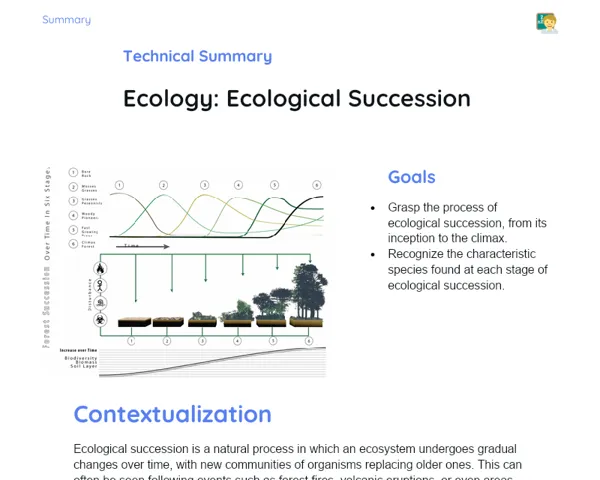Goals
1. Understand what linkage is and why it matters in genetic transmission.
2. Solve problems related to gene linkage.
3. Identify different types of linkage.
Contextualization
Genetics is a captivating field of biology that sheds light on how traits are inherited through generations. A key concept here is linkage, which describes the tendency of genes that are situated close to each other on the same chromosome to be inherited together. This understanding is not just crucial for grasping genetic inheritance; it also has real-world applications in biotechnology and medicine, such as in crafting genetic therapies and engineering more resilient crops in agriculture. For instance, when developing GMOs, it's essential for scientists to comprehend which genes are linked to avoid introducing any unwanted traits.
Subject Relevance
To Remember!
Concept of Linkage
Linkage refers to the phenomenon where genes that are situated close to each other on the same chromosome tend to be inherited together. This concept is a cornerstone of genetics and counters Mendel's principle of independent assortment, indicating that the physical distance on the chromosome impacts genetic inheritance.
-
Linkage happens when genes are located in close proximity on a chromosome.
-
It challenges Mendel's principle of independent assortment.
-
Crucial for understanding the inheritance of multifactorial traits.
Importance of Linkage in Genetic Transmission
Linkage plays a significant role in genetic transmission as it helps explain inheritance patterns that cannot be elucidated merely through independent assortment. Understanding linkage enables the construction of genetic maps that assist scientists in pinpointing specific genes and unraveling the inheritance of complex traits.
-
Aids in explaining intricate inheritance patterns.
-
Facilitates the creation of genetic maps.
-
Helps locate specific genes along a chromosome.
Types of Linkage
There are two primary types of linkage: complete linkage and incomplete linkage. Complete linkage arises when genes are so closely situated that they virtually never separate due to recombination during meiosis. Incomplete linkage occurs when genes are in proximity yet have some likelihood of separating through recombination.
-
Complete linkage: genes closely situated that almost never separate.
-
Incomplete linkage: nearby genes that retain some possibility of recombination.
-
Both linkage types are crucial for developing genetic maps.
Practical Applications
-
Genetic Mapping: Utilized in research to identify genes responsible for hereditary conditions, aiding the development of genetic therapies.
-
Genetic Engineering: Knowledge of linkage is vital while creating GMOs to ensure the desired traits manifest.
-
Agriculture: Enhances the development of more resilient and productive crops by identifying and modifying genes linked to beneficial traits.
Key Terms
-
Linkage: The tendency of nearby genes on the same chromosome to be inherited together.
-
Complete Linkage: A scenario where genes are so close they almost never separate via recombination.
-
Incomplete Linkage: Genes are near each other but can still separate through recombination.
-
Genetic Map: A depiction of the relative locations of genes on a chromosome based on recombination frequency.
Questions for Reflections
-
How can knowledge of linkage aid in formulating genetic therapies for hereditary diseases?
-
In what ways can an understanding of linkage influence the development of GMOs in agriculture?
-
What ethical and scientific challenges arise from using linkage in biotechnology and medicine?
Creating a Simplified Genetic Map
This mini-challenge aims to reinforce the understanding of linkage and the genetic mapping process. Students will create a simplified genetic map using everyday materials.
Instructions
-
Form groups of 3-4 students.
-
Each group should take a sheet of paper and draw a horizontal line down the center to represent a chromosome.
-
Mark five points along the line as indicators of different genes. Label them A, B, C, D, and E.
-
Use a provided recombination frequency table to determine the genetic distances between the genes.
-
Draw a genetic map illustrating the relative positions of the genes based on the calculated distances.
-
Each group should present their genetic map to the class, explaining the rationale behind the placement of the genes.

